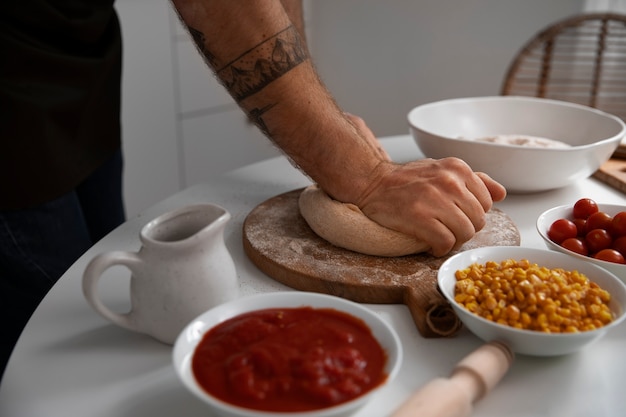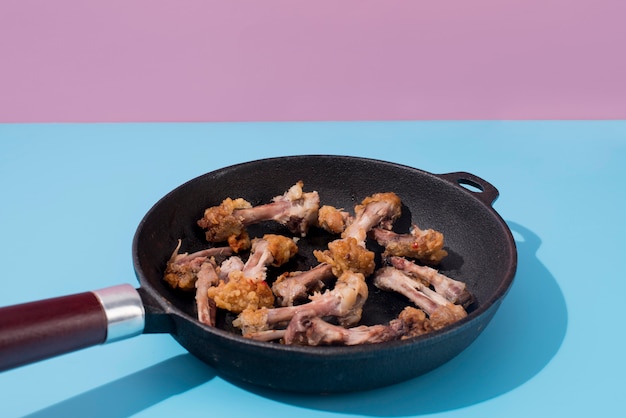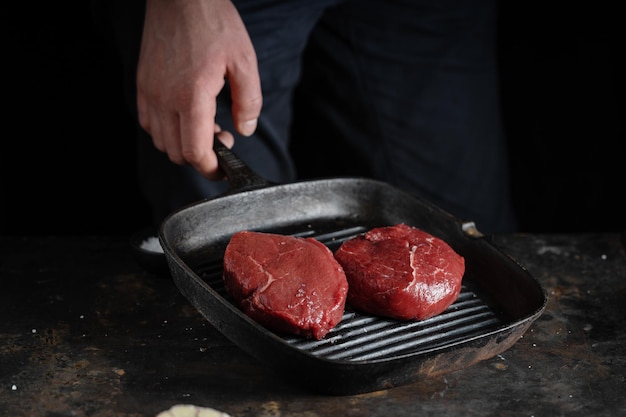Alright, folks, let's talk corned beef! I know, I know, it might not be the first thing that pops into your head when you think about delicious meals, but trust me, when done right, corned beef can be an absolute revelation. As a seasoned cook, I've spent years mastering the art of making corned beef, and I'm here to spill all my secrets and share my passion for this often-overlooked culinary gem. From choosing the perfect cut to mastering the slow-cooking techniques, we'll cover everything you need to know to impress your friends and family with a truly memorable corned beef feast.
(Part 1) My Love Affair with Corned Beef

My journey with corned beef began in my childhood, way back when my culinary knowledge was limited to the wonders of chicken nuggets and hamburgers. My mum would occasionally cook up a pot of corned beef, and I distinctly remember being puzzled by its strong, salty aroma. It was definitely a far cry from the kid-friendly food I was used to. But as I grew older, my palate expanded and I started to appreciate the unique, almost earthy flavor of corned beef.
It was a moment of culinary revelation when I discovered the magic of slow-cooked corned beef. My dad had a collection of old cookbooks, and I stumbled upon a recipe that promised melt-in-your-mouth tenderness and a symphony of flavors. I was intrigued, and I decided to give it a go.
I followed the recipe meticulously, and the result was nothing short of amazing. The beef was so incredibly tender that it practically fell apart, and the rich, savory broth was like a warm hug for the soul. That was the moment my love affair with corned beef truly began. It became a staple in my kitchen, and I couldn't wait to share my passion for this wonderful dish with everyone.
(Part 2) Understanding the Basics: From Brine to Brisket

Before we dive into the cooking process, let's get familiar with the basics of corned beef. Understanding what makes this cut of meat so unique will help you appreciate the process and the final results.
The Salt-Cured Story
Corned beef, for those who aren't familiar, is essentially a cut of beef that's been cured in a brine. This brine is typically made up of salt, saltpeter, and sometimes sugar and spices. It's a preservation technique that's been around for centuries, and it's a vital part of culinary traditions all over the world. The salt draws out moisture from the meat and also acts as a natural preservative.
The Star of the Show: The Brisket
The most common cut of meat used for corned beef is the brisket. This is a tough cut of beef that comes from the lower chest area of the cow. It's naturally flavorful and contains a good amount of marbling (those streaks of fat) that help to make the meat incredibly tender when cooked properly. Look for a brisket that's got a good amount of marbling for the best results.
Deciphering the Brine
The brine is the secret weapon that gives corned beef its unique flavor and texture. A well-crafted brine is packed with flavor and helps break down those tough connective tissues, resulting in a tender, melt-in-your-mouth experience.
Shopping Smart: What to Look For
When you're picking out your corned beef, be sure to read the label carefully. Look for corned beef that's been cured with traditional spices and avoid anything with artificial flavors or colors. A good corned beef should be free of nitrates and nitrites, which are preservatives that can be harmful in large quantities.
(Part 3) Master the Art of Cooking Corned Beef

Now, let's get into the exciting part: cooking the corned beef! While there are several ways to cook corned beef, my personal favorite is slow-cooking. It's a simple, hands-off method that consistently produces a tender and flavorful result.
Slow-Cooker Bliss: Effortless and Delicious
1. Prepare the Beef: Rinse your corned beef thoroughly and pat it dry. If it's still wrapped in a casing, remove it. This is a good time to remove any visible excess fat, but don't go overboard! A little bit of fat is good for flavor and tenderness.
2. Seasoning Up: Place the corned beef in your slow-cooker and add a few cups of water or beef broth. The liquid will help the meat cook evenly and create a delicious broth that can be used for sauces or soups later. You can also add a few bay leaves, peppercorns, and even some garlic cloves for extra depth of flavor.
3. cooking time: Set your slow-cooker to low and cook for 6-8 hours, or until the meat is fork-tender. You can use a fork to poke the beef, and if it goes in easily, it's ready.
4. Resting Time: Once the corned beef is cooked, resist the urge to dive right in. Let it rest in the broth for at least 30 minutes before slicing and serving. This allows the meat to reabsorb some of the moisture, making it even more tender and flavorful.
Exploring Other Cooking Methods
While slow-cooking is my preferred method, there are other ways to cook corned beef. You can braise it in the oven, simmer it on the stovetop, or even cook it in a pressure cooker. Each method has its own quirks and advantages, so experiment and find what works best for you.
Avoiding Common Pitfalls: Tips for the Perfect Cook
Don't Overcook: Overcooked corned beef can become tough and dry. Check the meat regularly during the cooking process to ensure it's tender. Use a fork to poke it - if it goes in easily, it's done.
Keep it Moist: The corned beef needs to be submerged in liquid to cook evenly. If the liquid level starts to decrease during cooking, add more water or broth.
Season with Restraint: Corned beef is already quite salty due to the curing process, so be careful not to overdo it with extra seasoning.
(Part 4) The Corned Beef Feast: A Symphony of Flavors
So, your corned beef is cooked to perfection, and now it's time to put together a feast that's worthy of this culinary masterpiece! Here are a few ideas to help you create a delicious and memorable meal.
The Classic Pairing: Cabbage and Carrots
No corned beef feast is complete without a side of cabbage and carrots. The sweet and tangy flavors of these vegetables perfectly complement the salty and savory corned beef. You can simply boil the cabbage and carrots in the same pot as the corned beef, or you can roast them in the oven for a more intense flavor.
Beyond the Basics: Other Delicious Sides
There are so many other sides that pair beautifully with corned beef. Here are a few of my personal favorites:
mashed potatoes: Creamy, comforting, and always a crowd-pleaser. You can add a little bit of butter and milk for extra richness, or even a touch of sour cream for a tangy twist.
Roasted Potatoes: Crispy on the outside, fluffy on the inside, and bursting with flavor. Roast them with herbs like rosemary or thyme, or add some garlic for extra aroma.
Cornbread: The perfect balance to the salty corned beef. You can make it from scratch or grab a mix - either way, it's a delicious addition to the table.
Glazed Carrots: Sweet and tangy, with a beautiful glossy finish. Glaze them with a mixture of brown sugar, honey, and a touch of orange zest.
green beans: Simple and satisfying, with a crisp bite. You can steam them, roast them, or simply boil them with a little bit of salt and pepper.
Serving with Style: A Culinary Presentation
When it comes to serving your corned beef, I like to keep it simple and elegant. Slice the meat thinly and arrange it beautifully on a platter with your chosen sides. You can also use the corned beef to make sandwiches, wraps, or salads.
(Part 5) Going Beyond the Basics: Recipes and Ideas
Now that we've covered the fundamentals, let's get creative and explore some exciting recipes and ideas to elevate your corned beef game.
Recipe 1: Slow-Cooked Corned Beef with a Mustard Glaze
This recipe is a classic for a reason. The slow-cooking method guarantees tender, juicy meat, and the mustard glaze adds a touch of sweetness and tang that takes the dish to the next level.
Ingredients:
1 cup of water or beef broth
1 bay leaf
6 peppercorns
2 garlic cloves
1/2 cup of brown sugar
1/4 cup of Dijon mustard
Instructions:
1. Place the corned beef in your slow-cooker, add the water, bay leaf, peppercorns, and garlic cloves.
2. Cook on low heat for 6-8 hours, or until the meat is fork-tender.
3. In a small saucepan, combine the brown sugar and Dijon mustard. Stir over low heat until the sugar is dissolved and the mixture is smooth.
4. Remove the corned beef from the slow-cooker and place it on a cutting board.
5. Brush the corned beef generously with the mustard glaze. The glaze will caramelize slightly during the cooking process, adding a touch of sweetness and depth of flavor.
6. Serve your masterpiece with your favorite sides.
Recipe 2: Corned Beef Hash with a Modern Twist
This recipe puts a modern spin on the classic corned beef hash. It's packed with flavor and texture, and it's perfect for a quick and easy meal.
Ingredients:
1 cup of cooked corned beef, chopped
1 large potato, diced
1/2 cup of diced onion
1/4 cup of chopped green bell pepper
1/4 cup of chopped red bell pepper
1 tablespoon of olive oil
Salt and pepper to taste
Instructions:
1. In a large skillet, heat the olive oil over medium heat.
2. Add the diced potato and cook until softened, about 5 minutes.
3. Add the onion, green bell pepper, and red bell pepper, and cook until softened, about 5 minutes.
4. Add the chopped corned beef and cook until heated through.
5. Season with salt and pepper to taste.
6. Serve immediately with a sprinkle of fresh parsley for a vibrant touch.
Recipe 3: Corned Beef and Sauerkraut Sandwiches
These sandwiches are a classic comfort food that's sure to satisfy. The combination of corned beef, sauerkraut, and Swiss cheese is a match made in culinary heaven.
Ingredients:
1/2 cup of cooked corned beef, sliced
1/4 cup of sauerkraut
1 slice of Swiss cheese
2 slices of rye bread
1 tablespoon of mustard
Instructions:
1. Spread mustard on both slices of rye bread.
2. Layer the corned beef, sauerkraut, and Swiss cheese on one slice of bread.
3. Top with the other slice of bread.
4. Serve immediately, and enjoy the warm, comforting flavors of this classic sandwich.
Corned Beef Beyond the Kitchen: Creative Ideas
Don't be afraid to get creative with your corned beef. Here are a few ideas to inspire you:
corned beef tacos: Top warm tortillas with shredded corned beef, your favorite salsa, a dollop of guacamole, and a sprinkle of sour cream.
corned beef soup: Simmer shredded corned beef in a flavorful broth with your favorite vegetables and noodles for a hearty and satisfying soup.
Corned Beef Dip: Combine shredded corned beef with cream cheese, sour cream, and your favorite spices for a delicious party appetizer that's sure to be a hit.
Corned Beef Quesadillas: Fill tortillas with corned beef, cheese, and your favorite toppings for a quick and easy meal.
(Part 6) Leftover Love: Making the Most of Your Corned Beef
Don't let those precious corned beef leftovers go to waste! They're a blank canvas for a variety of delicious dishes.
The Reheating Ritual: Keeping it Tender and Tasty
oven method: Preheat your oven to 350°F (175°C). Place your leftover corned beef in a baking dish and add a little bit of liquid, like broth or water. Cover the dish with foil and bake for 30 minutes, or until heated through.
Slow-Cooker Method: Place the leftover corned beef in a slow-cooker and add a few cups of water or broth. Set the slow-cooker on low heat and cook for 2-3 hours, or until heated through.
Leftover Magic: Recipes and Ideas
Corned Beef Hash: Dice the leftover corned beef and combine it with potatoes, onions, and bell peppers for a hearty and flavorful breakfast or dinner.
Corned Beef Soup: Use the leftover corned beef to make a comforting soup. Simmer the meat in a flavorful broth with vegetables and noodles.
Corned Beef Salad: Combine the leftover corned beef with chopped vegetables, your favorite dressing, and some crunchy toppings for a fresh and satisfying salad.
(Part 7) FAQs: Your Corned Beef Questions Answered
Let's tackle some common corned beef questions to ensure you're equipped with all the knowledge you need.
Q1: How Long Does Corned Beef Last in the Fridge?
A: Cooked corned beef can be stored in the refrigerator for up to 4 days. Wrap it tightly in plastic wrap or store it in an airtight container.
Q2: Can I Freeze Corned Beef?
A: Yes, you can freeze cooked corned beef for up to 3 months. To freeze it, wrap it tightly in plastic wrap and then in aluminum foil to prevent freezer burn.
Q3: How Do I Reheat Corned Beef?
A: There are a few ways to reheat corned beef. You can reheat it in the oven, slow-cooker, or microwave. Just make sure to heat it thoroughly to an internal temperature of 165°F (74°C).
Q4: What Happens if I Overcook Corned Beef?
A: Overcooked corned beef will be tough and dry. To prevent this, check the meat regularly with a fork to ensure it's tender.
Q5: What Can I Do with the Corned Beef Brine?
A: The corned beef brine is a great source of flavor. You can use it to make soups, stews, or sauces. Just make sure to strain it before using it, to remove any sediment.
(Part 8) The Verdict: Embark on a culinary adventure
Corned beef is more than just a meal, it's a culinary journey. It's a testament to centuries of culinary traditions and a celebration of the power of slow-cooking. With a little bit of patience and the right ingredients, you can create a delicious and unforgettable meal that will leave your guests raving. So, the next time you're looking for a hearty and comforting dish, give corned beef a try. You might just discover a new favorite meal.
Everyone is watching

Corn on the Cob: The Ultimate Guide to Perfectly Cooked Ears
Healthy MealsAh, corn on the cob. Just the name evokes images of sunny days, barbecues, and that sweet, juicy flavour that ...

Perfect Pork Roast Oven Cooking Time: A Guide to Delicious Results
Healthy MealsThere's something truly satisfying about a perfectly roasted pork. The aroma alone is enough to make your mout...

Ham Cooking Time: How Long to Bake, Smoke, or Boil a Delicious Ham
Healthy MealsAh, ham. It's a classic, isn't it? A real crowd-pleaser, especially around holidays. And when done right, it'...

Scallops: The Ultimate Guide to Perfect Cooking
Healthy MealsAh, scallops. Those delicate, sweet, and utterly delicious morsels of the sea. They hold a special place in my...

Spaghetti Squash: The Ultimate Guide to Cooking and Serving
Healthy MealsRemember that time you saw spaghetti squash at the supermarket, looking all bumpy and strange, and thought, "W...
